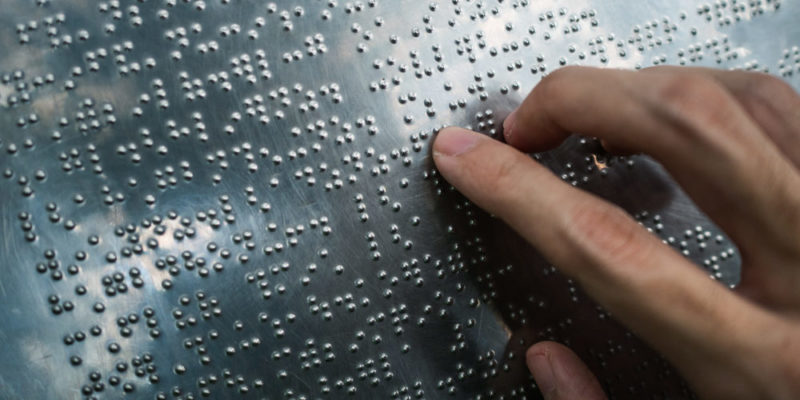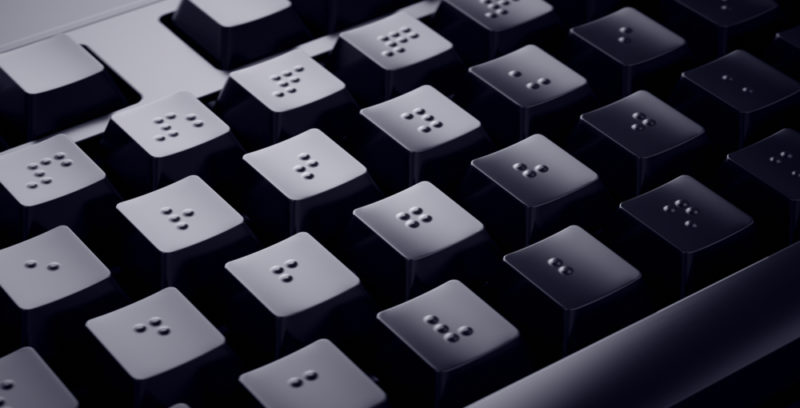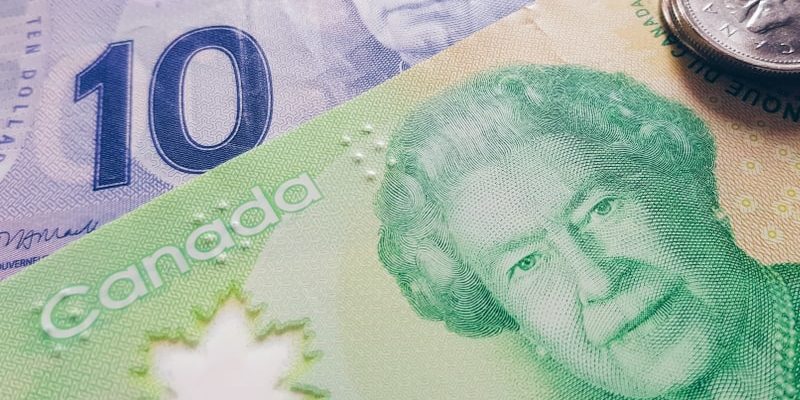We explain what the Braille writing system is, its origin and how this system works. In addition, its characteristics and translation.
What is Braille?
It is known as Braille or Braille System to a reading and writing system designed for blind people , based on the sense of touch . It was created in the mid-nineteenth century by Louis Braille, a French pedagogue who was accidentally blind when he was a few years old. It is based on a previous reading-writing system designed by Charles Barbier de la Serre.
Braille is not a language or a language of its own, but a writing mechanism based on points of relief on a smooth surface . This is a different way of representing the traditional alphabet of verbal languages.
In short, it is a form of writing that does not require sight but touch. Therefore, it must be adapted to the alphabet of each particular language: the Chinese language in Braille will remain Chinese and the Spanish, Spanish.
Braille history

Louis Braille was an individual with a particular aptitude for language sciences , algebra, and music .
Consequently, he received a scholarship to enter the National Institute for the Young Blind in Paris.
His father Simón-René had already taught him to read, marking the letters on a piece of wood with pencil marks .
At the Institute, Louis Braille also learned the Barbier writing method , which had been invented for military purposes.
After a while he reinvented it in a first 8-point writing system . Over the years he ended up simplifying it and reducing it to only 6 points, thus obtaining the Braille that we know today.
How does Braille work?

The Braille System consists of a set of cells in which six raised dots are inscribed . They are organized according to a matrix of three rows by two columns, which are usually numbered from top to bottom and from left to right.
Thus, the presence or absence of dots allows coding the symbols of verbal language ; depending on the position in which the point (s) appear, it is one or the other letter.
In this way , a possible matrix of 64 combinations (all letters and punctuation marks) is obtained. To them are added special differentiating symbols that serve to denote capital letters, italics, numbers or musical notes.
There are also special signs in Braille for shorthand , for the special characters typical of each language, for mathematical signs .
Later, Braille was expanded to 8 points to be able to encode each letter in a single cell and accommodate any ASCII character. Therefore, the 256 possible combinations allow to respond to the Unicode standard.
Braille alphabet
The Braille alphabet, as we have said, varies depending on the reference language . In Spanish and other languages that use the same alphabet, it is as follows:
Braille numbers
Braille numbers are encoded similar to letters, as shown in the following graphic:
Braille transcription
When it comes to transcribing Braille, various methods are available, known as “Grade 1”, “Grade 2” and “Grade 3”.
- Braille grade 1. The most commonly used and the only official to publish in Spain , according to its Braille Commission.
- Braille grades 2 and 3. Known as stenotype, they are similar to stenography. Each one forms a fast writing system, with greater capacity for synthesis, since in Braille space cannot be saved by reducing the printed surface, as in verbal language . Signs must be of a standard size to be recognizable by touch.
Braille “Translators”
 There are computer applications capable of "translating" (although in reality the appropriate verb would be "transcribing") to and from Braille in its various degrees. For example, the website Brailletranslator.org gives us one free and online.
There are computer applications capable of "translating" (although in reality the appropriate verb would be "transcribing") to and from Braille in its various degrees. For example, the website Brailletranslator.org gives us one free and online.
Why is Braille important?
In the first place, the invention of Braille was a leap forward in incorporating the blind population into organized life , since it allowed them to read and write without the need for intermediaries. In addition, it constitutes a binary numbering system that arose long before the binary code that allowed the emergence of computing .
Braille in culture
 The incorporation of Braille into everyday life is rapidly expanding throughout the world. First of all, there are countries like Canada and Paraguay that use it on their tickets . In addition, its use has been spread in subway stations or public transport in various countries such as Japan , Spain, Argentina , among others.
The incorporation of Braille into everyday life is rapidly expanding throughout the world. First of all, there are countries like Canada and Paraguay that use it on their tickets . In addition, its use has been spread in subway stations or public transport in various countries such as Japan , Spain, Argentina , among others.However, there are digital sound systems for text recognition that, in the case of the youngest, are preferable to learning Braille.
World braille day
Every January 4, World Braille Day is celebrated , as a way to celebrate its appearance. In addition, it is a day that is used to combat forms of discrimination against the blind and to draw attention to efforts to promote equality.
Biography of Louis Braille
As we have already said, the inventor of this reading / writing system was called Louis Braille and he was an outstanding French scholar. He was born in 1809 and, after going blind at the age of three, he was educated in institutions for the blind, where he later collaborated as a teacher of the method of his own invention.
There he developed his knowledge of grammar, rhetoric, history , geometry, algebra and above all music (he played the piano, cello and the organ). In his early forties he contracted tuberculosis and had to withdraw from his usual activities except music. He died at age 43, on January 6, 1852.
The above content published at Collaborative Research Group is for informational and educational purposes only and has been developed by referring reliable sources and recommendations from technology experts. We do not have any contact with official entities nor do we intend to replace the information that they emit.
MA student of the TransAtlantic Masters program at UNC-Chapel Hill. Political Science with a focus on European Studies. Expressed ideas are open to revision. He not only covers Technical articles but also has skills in the fields of SEO, graphics, web development and coding. .
Leave a reply
Your email address will not be published. Required fields are marked *Recent post

Sport: What Is It, Types, Risks, Features, Characteristics and Examples

Dogs: Emergence, Features, Characteristics, Feeding and Breeds

Story: Definition, Elements, Structure, Features and Characteristics

